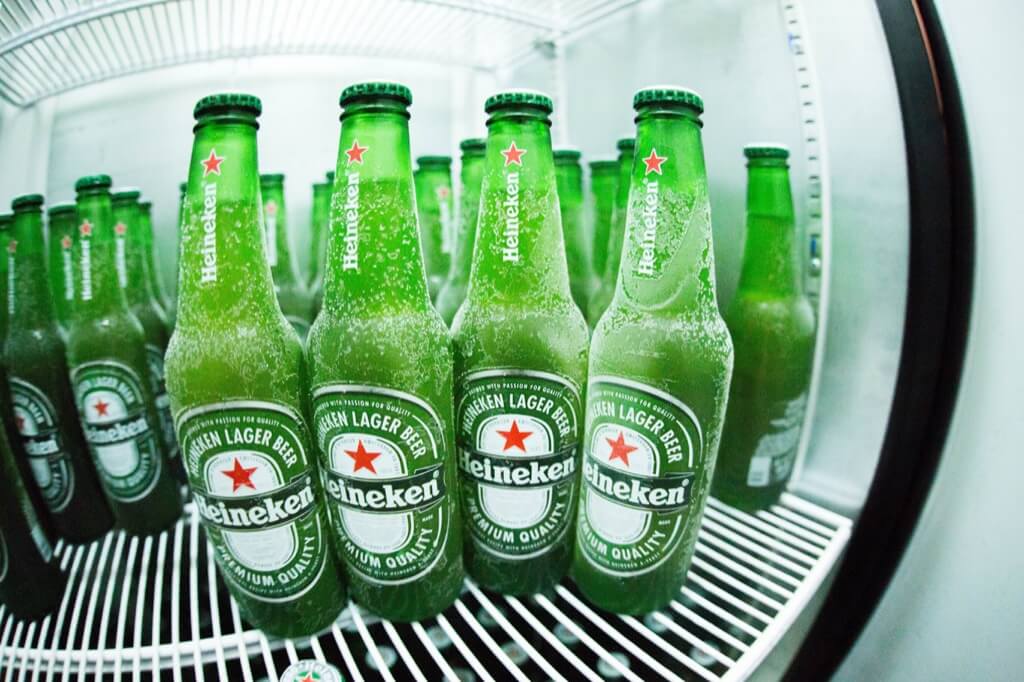Picture this: Would you ever tempt fate with a culinary version of Russian roulette? While the odds of playing the actual dangerous game are thankfully rare, many in Japan willingly pay a premium for a dish that, if prepared incorrectly, could prove lethal by dessert time. Dive with us into the thrilling and treacherous world of Fugu, Japan’s iconic dish.
In Japan, “river pig” is not a reference to a chubby river-dwelling creature but an elegant and deadly pufferfish, revered for its unique meat. There are 193 known species of this enigmatic creature, with only a few making it to the Japanese gourmet table. Unlike most fish, pufferfish employ a unique method of movement – relying not on the full breadth of their body but on their fins. This limited mobility means they’ve evolved fascinating defense mechanisms. They can expand into a formidable ball, covered in sharp spines. And if any predator dares to ingest them, they’re met with a powerful adversary: tetrodotoxin (TTX).
TTX Is No Laughing Matter
This potent neurotoxin is a staggering 1,200 times deadlier than cyanide. Symptoms begin with a tingling sensation and can escalate to paralysis, making breathing impossible, and culminating in an agonizingly conscious suffocation. Despite its terror, the toxin finds connections with other deadly marine elements, such as the venom of the cone snail and the paralytic shellfish toxin.
While these toxins are life-threatening, their origin is intriguing. Rather than being inherent to the pufferfish, these toxins are introduced to the fish by the bacteria they consume, leading to their venomous nature.
Now, you’d wonder, with such risks involved, why would anyone consume Fugu? The Japanese have indulged in this delicacy for nearly two thousand years, often defying governmental bans. This risky dining experience can cost you a whopping $450, where every morsel, from sashimi to stews, is a testament to Japanese culinary art.
However, with such delectable danger, mistakes have been made. Until the 20th century, countless lives were lost to poorly prepared Fugu. An unfortunate memory includes a renowned actor, Bando Mitsugoro, who, confident in his immunity, consumed the deadly liver only to meet a tragic end.
To Safeguard Diners, Japan Imposed Rigorous Training for Fugu Chefs
This demanding certification process ensures only the best handle this delicate fish. Alongside, proper licenses for sale and strict waste disposal measures are in place. Despite these measures, about 50 individuals face Fugu poisoning every year, mainly due to illegally prepared dishes or intentional consumption.
So, what’s the verdict on its taste? Most claim Fugu has a delicate, subtle flavor that’s overshadowed by the adrenaline of consuming something so dangerous. For others, the allure is its alleged aphrodisiac properties.
Despite its dark reputation, Fugu remains one of the safest seafood in Japan due to strict regulations. The US, however, remains wary, with imports banned since 1980. A few brave souls have tried to introduce it, only to face the FDA’s skepticism.
Pros:
- Cultural Significance: Fugu has been a part of Japanese culinary history for nearly two millennia, a tradition that has survived despite various bans over the centuries. The dish’s preparation has evolved into a complex and highly specialized art form, particularly in rural areas.
- Exquisite Presentation: Fugu sashimi is traditionally arranged to resemble chrysanthemum blossoms or cranes, symbols of good fortune and longevity in Japanese culture. This meticulous presentation adds to the overall dining experience.
- Unique Sensation: Some fugu enthusiasts claim that the slight tingling sensation caused by trace amounts of tetrodotoxin heightens the dining experience, adding an element of thrill to the meal.
- Potential Aphrodisiac Properties: Some, including restaurant owner Nobuyoshi Kuraoka, argue that the minimal amount of poison present in the dish can increase blood flow and potentially act as an aphrodisiac.
- Safety Regulations: With rigorous governmental controls in place, fugu prepared by licensed chefs has a solid safety track record. The licensing exams, which only about 35% of applicants pass, ensure that only the most skilled chefs can prepare and serve the dish.
Cons:
- Fatal Risks: Consuming improperly prepared fugu can be lethal. Tetrodotoxin, the poison found in pufferfish, is 1,200 times more toxic than cyanide. Symptoms of poisoning include tingling, numbness, dizziness, vomiting, and respiratory paralysis.
- Cost: A full fugu meal can be quite expensive, with costs sometimes reaching upwards of USD 450. This price point might deter many potential diners.
- Lackluster Flavor: According to some accounts, like that of National Geographic writer Noel Vietmeyer, the taste of fugu is delicate and almost lacks any distinct seafood flavor. This might be disappointing for diners expecting a rich or robust taste.
- Historical Deaths: Despite the modern safety regulations, there is a dark history associated with fugu consumption. Hundreds used to die annually from improper preparation, and even prominent figures, like Kabuki actor Bando Mitsugoro, have succumbed to its toxic effects.
- Restricted Availability Outside Japan: Due to the potential risks, many countries, including the United States, have placed bans on importing fugu. Although there have been attempts to overturn these bans, concerns about safety and the ability to guarantee toxin-free fish have kept restrictions in place.
Ethical Implications of Fugu Consumption
The question arises: Is it ethical to consume a creature for mere gastronomic pleasure, especially when that act carries a high risk of death? As more people become environmentally conscious and advocate for animal rights, this debate intensifies. Some argue that the ritualistic consumption of fugu symbolizes a deep respect for the fish and the circle of life. Others believe that endangering oneself and killing an animal for a fleeting thrill is ethically questionable, especially when other seafood options are readily available.
The Environmental Impact of Fugu Fishing
With overfishing becoming a critical concern globally, the impact of catching fugu should not be overlooked. Pufferfish, like many marine species, play a unique role in their ecosystem. Overfishing them could destabilize marine environments, leading to unforeseen ecological repercussions. While fugu is not currently listed as an endangered species, the ongoing demand and high prices could drive over-exploitation, threatening their populations and the balance of their habitats.
The Rise of Farm-Raised Fugu
To address concerns about overfishing and to ensure a consistent supply, some businesses have started farming fugu. This raises another debate: Can farm-raised pufferfish match the quality of their wild counterparts? Moreover, farmed fish sometimes come with their own set of issues like disease outbreaks, use of antibiotics, and environmental concerns. While some consumers appreciate the controlled environment and potential decrease in toxin levels, purists argue that farmed fugu lacks the authentic taste and quality of wild-caught specimens.
Fugu in Fusion Cuisine
As global cuisine becomes increasingly intertwined, chefs outside of Japan are showing interest in incorporating fugu into fusion dishes. This brings up the question of authenticity versus innovation. While fusion cuisine is celebrated for breaking boundaries and creating new flavor profiles, some traditionalists believe that certain dishes, like fugu, should remain untouched to preserve their cultural significance and respect the age-old techniques used in their preparation.
Expansion of Fugu Preparation Training
Given the intricate skills required to prepare fugu safely, there’s a debate about expanding fugu preparation training outside of Japan. Some see it as an opportunity to increase the dish’s global appeal and reduce the risks associated with amateur preparations. Others worry that expanding training might dilute the dish’s cultural significance or, worse, lead to lax standards that could compromise safety. Whether to globalize the knowledge or keep it within Japan’s boundaries is a topic of ongoing discussion among culinary experts.




